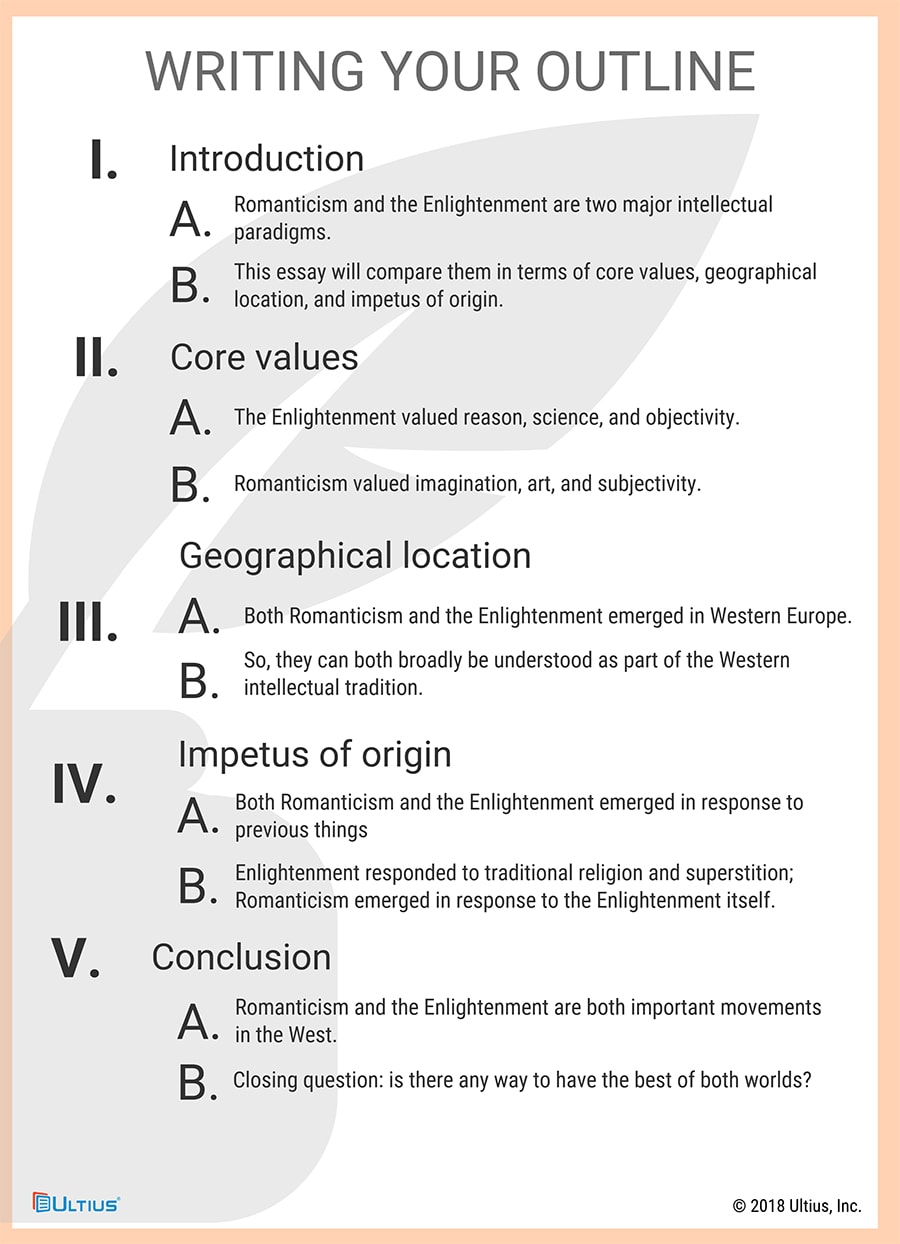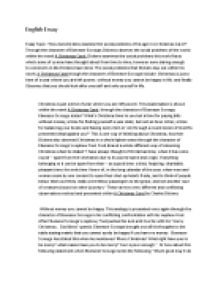
Hence comparative essay is one of the types of essay writings that includes an ultimate comparison of two different subjects that have somewhere interrelations in terms of differences and similarities. There will be a possibility that sometime two subjects might have some close relations, even some time utterly different from each blogger.comted Reading Time: 7 mins · Like any written work, start your comparative analysis essay outline with a strong introduction. With the intro focus on any background topic information and the approach, you’ll take to the problem. Also, be sure to make a strong thesis statement. Then lead into your first subject detailing all the blogger.comted Reading Time: 5 mins The Comparative Essay What is a comparative essay? A comparative essay asks that you compare at least two (possibly more) items. These items will differ depending on the assignment. You might be asked to compare • positions on an issue (e.g., responses to midwifery in Canada and the United States) • theories (e.g., capitalism and communism)
How To Write An Effective Introduction For Comparative Essay
Throughout your academic career, you'll be asked to write papers in which you compare and contrast two things: two texts, two theories, two historical figures, two scientific processes, and so on. In the "lens" or "keyhole" comparison, in which you weight A less heavily than B, you use A as a lens through which to view B.
Just as looking through a pair of glasses changes the way you see an object, using A as a framework for understanding B changes the way you see B. Lens comparisons are useful for illuminating, critiquing, or challenging the stability of a thing that, before the analysis, seemed perfectly understood, writing a comparative essay.
Often, lens comparisons take time into account: earlier texts, events, or historical figures may illuminate later ones, and vice versa. Faced with a daunting list of seemingly unrelated similarities and differences, you may feel confused writing a comparative essay how to construct a paper that isn't just a mechanical exercise in which you first state all the features that A and B have in common, and then state all the ways in which A and B are different.
Predictably, the thesis of such a paper is usually an assertion that A and B are very similar yet not so similar after all. To write a good compare-and-contrast paper, you must take your raw data—the similarities and differences you've observed—and make them cohere into a meaningful argument. Here are the five elements required. Frame of Reference.
This is the context within which you place the two things you plan to compare and contrast; it is the umbrella under which you have grouped them.
The frame of reference may consist of an writing a comparative essay, theme, question, writing a comparative essay, problem, or theory; a group of similar things from which you extract two for special attention; biographical or historical information. The best frames of reference are constructed from specific sources rather than your own thoughts or observations. Thus, in a paper comparing how two writers redefine social norms of masculinity, you would be better off quoting a sociologist on the topic of masculinity than spinning out potentially banal-sounding theories of your own.
Most assignments tell you exactly what the frame of reference should be, writing a comparative essay, and most courses supply sources for constructing it. If writing a comparative essay encounter an assignment that fails to provide a frame of reference, you must come up with one on your own.
A paper without such a context would have no angle on the writing a comparative essay, no focus or frame for the writer to propose a meaningful argument. Grounds for Comparison. Let's say you're writing a paper on global food distribution, and you've chosen to compare apples and oranges.
Why these particular fruits? Why not pears and bananas? The rationale behind your choice, the grounds for comparisonlets your reader know why your choice is deliberate and meaningful, not random. For instance, in a paper asking how the "discourse of domesticity" has been used in the abortion debate, the grounds for comparison are obvious; the issue has two conflicting sides, pro-choice and pro-life.
In a paper comparing the effects of acid rain on writing a comparative essay forest sites, your choice of sites is less obvious. A paper focusing on similarly aged forest stands in Maine and the Catskills will be set up differently from one comparing a new forest stand in the White Mountains with an old forest in the same region.
You need to indicate the reasoning behind your choice. The grounds for comparison anticipates the comparative nature of your thesis. As in any argumentative paper, your thesis statement will convey the gist of your argument, which necessarily follows from your frame of reference.
But in a compare-and-contrast, the thesis depends on how the two things you've chosen to compare actually relate to one another. Do they extend, corroborate, complicate, contradict, correct, or debate one another? In writing a comparative essay most common compare-and-contrast paper—one focusing on differences—you can indicate the precise relationship between A and B by using the word "whereas" in your thesis:.
Whereas Camus perceives ideology as secondary to the need to address a specific historical moment of colonialism, Fanon perceives a revolutionary ideology as the impetus to reshape Algeria's history in a direction toward independence. Whether your paper focuses primarily on difference or similarity, you need to make the relationship between A and B clear in your thesis.
This relationship is at the heart of any compare-and-contrast paper. Organizational Scheme. Your introduction will include your frame of reference, grounds for comparison, and thesis. There are two basic ways to organize the body of your paper.
If you think that B extends A, you'll probably use a text-by-text scheme; if you see A and B engaged in debate, a point-by-point scheme will draw attention to the conflict. Be aware, however, that the point-by- point scheme can come off as a ping-pong game. You can avoid this effect by grouping more than one point together, thereby cutting down on the number of times you alternate from A to B. But no matter which organizational scheme you choose, you need not give equal time to similarities and differences.
In fact, your paper will be more interesting if you get to the heart of your argument as quickly as possible. Thus, writing a comparative essay, a paper on two evolutionary theorists' different interpretations of specific archaeological findings might have as few as two or three sentences in the introduction on similarities and at most a paragraph or two to set up the contrast between the theorists' positions. The rest of the paper, whether organized text- by-text or point-by-point, will treat the two theorists' differences.
You can organize a classic compare-and-contrast paper either text-by-text or point-by-point. But in a "lens" comparison, in which you spend significantly less time on A the lens than on B the focal textyou almost always organize text-by-text. That's because A and B are not strictly comparable: A is merely a tool for helping you discover whether or writing a comparative essay B's nature is actually what expectations have led you to believe it is.
Linking of A and B. All argumentative papers require you to link each point in the argument back to the thesis. Without such links, your reader will be unable to see how new sections logically and systematically advance your argument. In a compare-and contrast, you also need to make links between A and B in the body of your essay if you want your paper to hold together.
As a girl raised in the faded glory of the Old South, amid mystical tales of magnolias and moonlight, the mother remains part of a dying generation. Surrounded by hard times, racial conflict, and limited opportunities, Julian, on the other handwriting a comparative essay, feels repelled by the provincial nature of home, and represents a new Southerner, one who sees his native land through a condescending Northerner's eyes.
CopyrightKerry Walk, for the Writing Center at Harvard University. Skip to main content. Main Menu Utility Menu Search. Harvard College Writing Program HARVARD. Home FAQ Writing Support Schedule an appointment English Grammar and Language Tutor Senior Thesis Tutors Departmental Writing Fellows Writing Resources Writing Resources Writing Advice: Writing a comparative essay Barker Underground Blog Meet the tutors. In the most common compare-and-contrast paper—one focusing on differences—you can indicate the precise relationship between A and B by using the word "whereas" in your thesis: Whereas Camus perceives ideology as secondary to the need to address writing a comparative essay specific historical moment of colonialism, Fanon perceives a revolutionary ideology as the impetus to reshape Algeria's history in a direction toward independence.
In text-by-textyou discuss all writing a comparative essay A, then all of B. In point-by-pointyou alternate points about A with comparable points about B. Writing Resources Strategies for Essay Writing How to Read an Assignment Moving from Assignment to Topic How to Do a Close Reading Overview of the Academic Essay Essay Structure Developing A Thesis Beginning the Academic Essay Outlining Counterargument Summary Topic Sentences and Signposting Transitioning: Beware of Velcro How to Write a Comparative Analysis Ending the Essay: Conclusions Revising the Draft Editing the Essay, Part One Editing the Essay, Part Two Tips on Grammar, writing a comparative essay, Punctuation and Style Brief Guides to Writing in the Disciplines.
Quick Links Schedule an Appointment Writing Resources Harvard Guide to Using Sources HarvardWrites Employment Follow HCWritingCenter. Copyright © The President and Fellows of Harvard College Accessibility Digital Accessibility Report Copyright Infringement, writing a comparative essay.
Comparison / Contrast Essays
, time: 4:25How to Write a Comparative Essay: the Most Detailed Guide
.jpg)
· Like any written work, start your comparative analysis essay outline with a strong introduction. With the intro focus on any background topic information and the approach, you’ll take to the problem. Also, be sure to make a strong thesis statement. Then lead into your first subject detailing all the blogger.comted Reading Time: 5 mins 6 rows · What is a comparative essay? A comparative essay asks that you compare at least two A comparative analysis essay is an essay that compares two different subjects such as people, texts, events, and theories. The focus of a comparative analysis essay is mainly on identifying the main similarities or differences between the subjects. With all these skills you are good to go when it comes to writing a comparative blogger.comted Reading Time: 10 mins

No comments:
Post a Comment